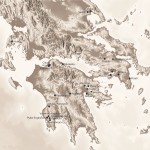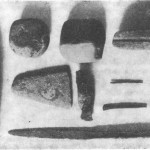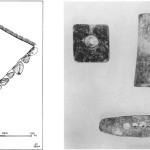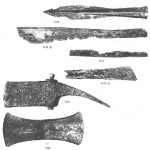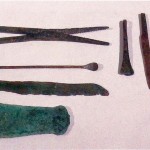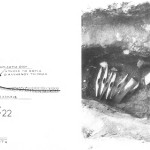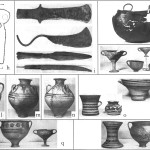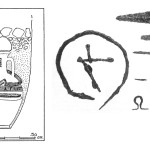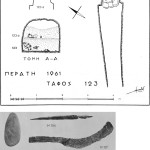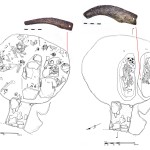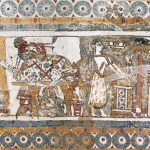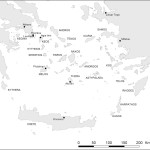Craftspeople, Hunters or Warlike Elites? A Reassessment of Burials Furnished with Tools in Mycenaean Greece from the Shaft Grave to the Post-Palatial Period
Laetitia Phialon
In Mycenaean Greece, the number of burials furnished with tools identified so far is rather low. Toolkits found in graves have been rightly regarded by Imma Kilian-Dirlmeier either as personal possessions of the deceased or symbols of control over craft production. This article reviews the body of evidence, analyzing the burials furnished with tools within the changing Late Helladic socio-political environments. It shows that whetstones and bronze chisels were tools frequently encountered in Mycenaean tombs and that most burials furnished with tools included weapons as well. In many cases, the variety of the grave goods is noteworthy. It appears that most burials furnished with tools belonged to the Mycenaean elites, but the selection of tools and their association with other objects in grave assemblages deserves further study to better understand funerary and social practices in the Late Bronze Age. Special interest is shown in the presence of axes in the grave assemblages, stressing the symbolic and economic values of the bronze double axes, and discussing the function of iron axes of trunnion type, likely used in fighting or hunting. Finally, this article supports the view that the system of symbols referring to craft and war/hunt, introduced by Anna Maria D’Onofrio for Early Iron Age male burials, is a relevant interpretive model to comprehend the presence of tools and weapons in Post-palatial burials. The notion of hybridization active in this system may be extended to include the dimension of trade, in particular when the grouping of bronzes in a tomb may represent the access to metals and networks.

Phialon L. 2021, Craftspeople, Hunters or Warlike Elites? A Reassessment of Burials Furnished with Tools in Mycenaean Greece from the Shaft Grave to the Post-Palatial Period, SMEA NS 7 , …

